How many World XIs can boast (if I may use the term) the presence of players from Zimbabwe, Bangladesh and the Netherlands? None that I have come across, in a season where World XIs are quite the flavour.My current task at hand is to unearth an all-time ODI World Cup (WC) XI, with a tiny condition which requires that not more than one player be selected from each team. The ‘tiny’ requirement kept increasing in stature over the course of the assignment, with players jostling with rivals as well as compatriots for a place on this list, compounded further by trivial matters like line-up alignment and team balance.I have displayed an intentional bias towards specialists as opposed to all-rounders in this selection. Historically, teams packed with all-rounders have made it to the final stages of a WC (prime examples being South Africa, New Zealand and England) without ever crossing the line. India in 1983 was an exception to this rule, but otherwise, WCs have been won by teams possessing specialists excelling in their chosen field.Looking back, this XI is a heady cocktail of some of the greatest names in cricket garnished by a few who made a back-door entry, thanks to the one-player-per-country rule.This is not a team one would like to run into at the 2015 WC, though by no means is it perfect. But then again, it was never meant to be.
#1 Sachin Tendulkar (India)
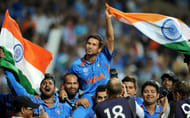
The list opens with someone widely regarded as the greatest cricketer of this generation. Some even opine that he is the greatest of all time. While the latter argument is debatable, there is absolutely no doubt that Sachin Tendulkar is the greatest Indian cricketer of this generation, more so in the 50-over format than the longest version, where a certain Rahul Dravid may stake claim to the top crown.
Besides being the highest run-scorer in the history of WCs and playing several match-winning knocks spread across six tournaments, Sachin inspired a generation of young superstars to stretch their limits, the best example of which is Yuvraj Singh, to win for the maestro the one trophy missing from his overflowing cabinet.
Tendulkar’s selection closes the door on Sourav Ganguly, India’s second highest run-scorer in WCs, and a wonderful ODI opener in his own right, and Zaheer Khan, the country’s highest wicket-taker in WCs, and an outstanding contributor when playing on the highest stage of ODI cricket.
#2 Graham Gooch (England)
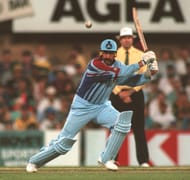
The master blaster will be joined by Graham Gooch, England’s immovable opening rock and highest WC run-scorer, the man who was present during every one of the country’s three unsuccessful forays into the tournament final – a feat not repeated after his retirement.
Among English batsmen, none really hold a candle to Gooch as far as the marquee tournament is concerned, though Allan Lamb, Graeme Hick, and Kevin Pietersen are notable mentions. Among pure bowlers, I was really tempted to include Bob Willis or Chris Old, the former perhaps the quickest Englishman since Frank Tyson, and the latter a swing connoisseur with outstanding WC stats. But their short careers in the marquee tournament forced me to move on.
My first choice from England, before consulting stats, was Ian Botham, undoubtedly the greatest all-rounder the country has ever produced. Beefy has, however, been a notorious non-performer (by his standards, mind you) in the batting department as far as the WC is concerned. He is England’s leading tournament wicket-taker, but his woeful batting prevents his inclusion as an all-rounder.
Gooch’s strike-rate of 63.25 is no match to openers like Adam Gilchrist and Sanath Jayasuriya, who have not made it to this list. Let me assure you that it is not Gooch but their countrymen who have kept them out. Besides, Goochie is the glue which holds this team together while the others go slam-bang around him.
#3 Viv Richards (West Indies)
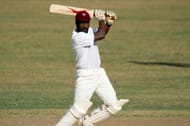
Brian Lara is the highest run-scorer in WCs for the West Indies. Courtney Walsh, Sir Andy Roberts, Sir Curtly Ambrose and Michael Holding have been the best performers with the ball at the gazebo tournament. Yet, all pale in comparison before a gum-chewing marauder who goes by the name of Sir Vivian Richards.
The only batsman to have a 60+ batting average while aggregating more than 1,000 runs in the tournament, Richards instilled the kind of fear in a bowler which the latter is usually expected to exude. The Antiguan carried the Caribbeans home in the 1979 WC and it was his spectacular dismissal in the 1983 edition which ensured India their first piece of cricketing glory.
A better number three batsman cannot be envisaged; Ricky Ponting may beg to differ, but the Australian is weighed down by the awesomeness of not just the aforementioned champion, but also his compatriot waiting patiently in the wings, and hence loses out.
#4 Martin Crowe (New Zealand) (C)
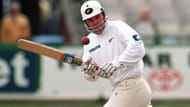
A brilliant tactician whose game-changing ideas nearly won the Kiwis the 1992 WC, Martin Crowe is entrusted with not just the top job, but also the important role of manning a relatively weak lower middle order.
Stephen Fleming and Scott Styris have scored more runs for New Zealand in WCs, but they are no match for the outrageous mastermind of Crowe. Among bowlers, I would have loved to include Shane Bond, who was almost unplayable during the 2003 and 2007 WCs, but I have already lined up a great quick bowling attack (or so I would like to believe). The Kiwis’ fine lineage of all-rounders – almost all of them characterised by unbridled aggression with the bat and dibbly-dobby bowling, have not been included either.
This meticulously put together line-up may be torn to shreds by eccentric genius, which could turn it inside out in a bid to confuse the opposition, or simply in the quest to follow cricketing knowledge like a sinking star (to borrow from Homer). With Crowe at the helm, this superstar ship is in excellent hands; the journey may experience plenty of twists and turns, but the destination will be a wee bit safer under his watch.
#5 Andy Flower (Zimbabwe) (WK)
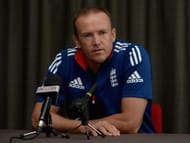
Andy Flower would be a genuine contender for membership into a World Test XI. In the ODI, and especially the WC context, he makes it due to the unique criterion of selecting one player from each team.
Though his ODI credentials are significantly weaker, Flower is Zimbabwe’s highest run-scorer in WCs and his reliable glove-work seals the deal. Dave Houghton is his closest contender as far as batting skills go, his epic 142 against New Zealand in a losing cause at the 1987 WC bearing testimony to the oodles of talent and grit he possessed.
Purely going by the heart, Neil Johnson would have been an excellent addition to this list. The man who punched way above his weight, with both bat and ball, during the 1999 WC, could stake claim to the opening position as batsman and bowler. But I have opted for experienced solidity over one-tournament brilliance in this selection.
#6 Shakib Al Hasan (Bangladesh)
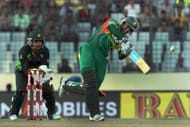
Technically perhaps the only genuine all-rounder in this team, the inclusion of Shakib Al Hasan is one of my easier decisions. As the country’s highest run-scorer and second-highest wicket-taker in WCs, Shakib is undoubted the best to arise from Bangladesh, definitely within the scope of WCs, and perhaps even beyond.
Shakib will be the first of two ‘floaters’ I will have in the team, whose batting positions are interchangeable depending on the just fallen wicket, in order to maintain a left-right batting combination which can make the opposition’s lines and lengths go awry.
Of course, if Crowe has his way, we could see Shakib open both batting as well as bowling!
#7 Ryan ten Doeschate (Netherlands)
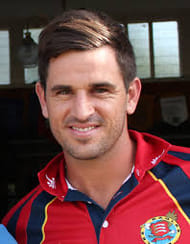
With 10 Test playing nations (two of them not exactly the strongest) and 11 players in a team, it would require no rocket science to appreciate that, at some point, one would need to play the ‘hide the minnow’ game.
It’s another thing altogether that, with 435 runs at an average of 62, and a few wickets to boot, Ryan ten Doeschate may not need to be hidden – Andrew Strauss can definitely vouch for that.
Tendo’s international career may have ended, but he remains one of the most sought after cricketers in franchising circles, and is, in my opinion, the most dangerous cricketer to have ever emerged from the minnow nations, WC or otherwise. He will be the second floater in this team.
Kenyan Steve Tikolo and Irishman Kevin O’Brien, another person for whom Strauss could pen a recommendation letter, were the other contenders for this position, the first eliminated due to batting position non-compatibility, and the second for never giving us an encore.
#8 Wasim Akram (Pakistan)
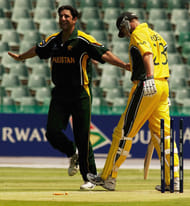
Perhaps the best left-arm quick to have ever graced a WC, Wasim Akram takes the new ball in this attack, unless Crowe suffers from a major Dipak Patel hangover.
As an individual, Akram can waltz his way into most World XI lists, but in this exercise, it’s essential to keep an eye on the men he eliminated. For a team delivering mercurial performances through its history in the WC, Pakistan can boast several contenders, the strongest among whom is undoubtedly Imran Khan.
Imran is a better batsman and leader, and at his peak with the ball, may have given Wasim a run for his money. However, Imran is in competition not just with Wasim, but also with Crowe, a man he came up against and successfully countered, during Pakistan’s triumph in 1992.
Imran is an inspirer of people, a captain ticking all the boxes for hero-worship from a young team. Crowe, on the other hand, can utilize resources better, as well as take controlled risks. In a World XI, the requirement for inspiration would not be as much as the need to optimally deploy resources, an attribute Crowe excels in.
Ideally, I wouldn’t want Imran to play under Crowe; to have a personality as strong as Imran play under another strong personality, could sow seeds for discontent, and even mutiny. Imran is therefore eliminated, making Wasim the undisputed representative from Pakistan.
#9 Shane Warne (Australia)
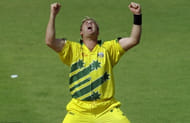
This was definitely the most difficult decision to make. Not the inclusion of Shane Warne, who has been a class act in his limited appearances in WCs, but the exclusion of other Australians, two to three of whom are usually present in most World XIs.
While the exclusions of Ponting, Gilchrist and Mark Waugh can be justified on the basis of a strong top order, the mercurial spinner’s brilliance cannot overhaul that of the highest wicket-taker in WC history – Glenn McGrath. Pigeon towers over Warnie in WCs, and not just literally, but he had to be sacrificed in the interest of team balance.
My initial choice for specialist spinner was Muttiah Muralitharan, with McGrath and the number 11 on this list rounding things off. A second glance, however, clarified that all three of them were notorious bunnies in their own right – certified number 11s for their respective teams. It would be almost criminal to play any of them higher.
A plethora of permutations and combinations later, I realized that McGrath could not be Australia’s representative, though he is undoubtedly the best WC performer from the country. The final choice had to be made between Warne and Brett Lee, who had almost similar stats in the tournament, but the requirement for a specialist spinner (sincere apologies to Brad Hogg here) eliminates the tearaway quick.
#10 Lasith Malinga (Sri Lanka)
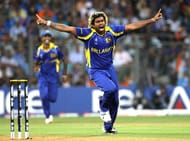
Once it was determined that a Sri Lankan representative would be slotted into the bowling department, and Warne and Wasim knocked out Murali and Chaminda Vaas respectively, selecting Lasith Malinga was a bit of a no-brainer.
Returning outstanding figures in the 2007 and 2011 WCs, Malinga will partner Wasim for a short opening spell, before returning later in the innings to issue those devastatingly accurate sling-shot reverse-swinging yorkers.
Though he may not have the numbers to prove it, the Galle slinger is a more accomplished batsman than Murali, and could also be called upon to deliver a few almighty heaves if the need arises.
#11 Allan Donald (South Africa)
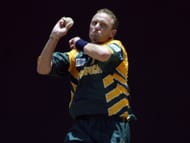
Allan Donald closes the curtains on this rather taxing exercise, and should not come across as much of a surprise for those who have been ticking off the countries as they moved along.
The highest wicket-taker for the Proteas in WCs, ‘White Lightning’ makes the cut, besides obvious reasons, due to his ability of juggling bowling positions (opening or first change) with ease. This is a precious quality to have in this team, and will give Crowe much greater flexibility in handling Malinga, or whosoever he deems fit to open the bowling.
Donald shuts out all-rounders like Jacques Kallis, Shaun Pollock and Lance Klusener, all of whom can stake claim to any ODI World XI, because my focus has been to acquire specialists from among the big boys, with players with multiple abilities coming from the ‘lesser’ nations.
Of course, Donald will not be my favourite candidate to be at the crease in the event of a last over finish (Klusener may agree), but hopefully, Goochie and the master blasters around him will ensure that this eventuality never arises.
Follow IPL Auction 2025 Live Updates, News & Biddings at Sportskeeda. Get the fastest updates on Mega-Auction and cricket news
